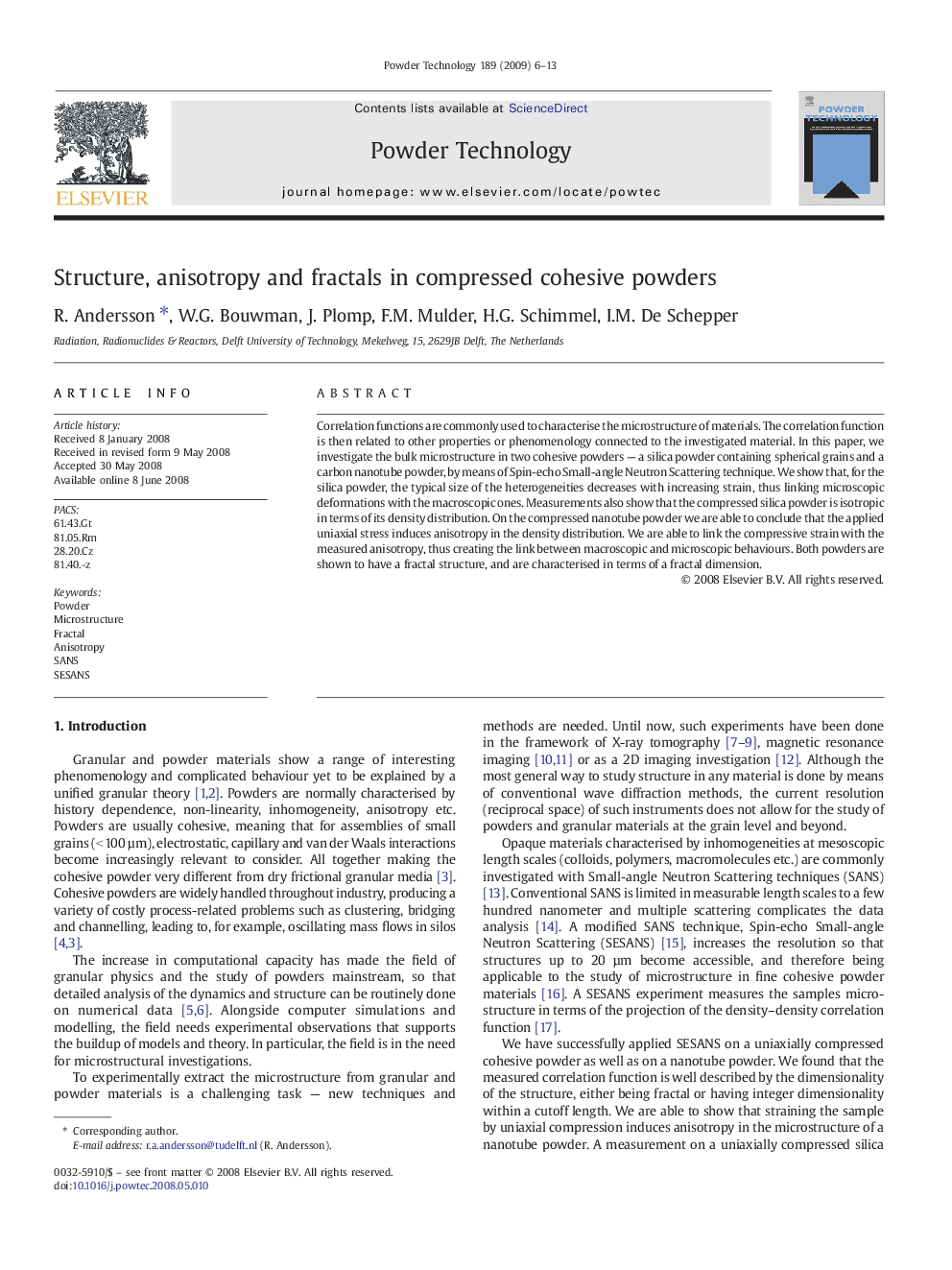| Article ID | Journal | Published Year | Pages | File Type |
|---|---|---|---|---|
| 238614 | Powder Technology | 2009 | 8 Pages |
Correlation functions are commonly used to characterise the microstructure of materials. The correlation function is then related to other properties or phenomenology connected to the investigated material. In this paper, we investigate the bulk microstructure in two cohesive powders — a silica powder containing spherical grains and a carbon nanotube powder, by means of Spin-echo Small-angle Neutron Scattering technique. We show that, for the silica powder, the typical size of the heterogeneities decreases with increasing strain, thus linking microscopic deformations with the macroscopic ones. Measurements also show that the compressed silica powder is isotropic in terms of its density distribution. On the compressed nanotube powder we are able to conclude that the applied uniaxial stress induces anisotropy in the density distribution. We are able to link the compressive strain with the measured anisotropy, thus creating the link between macroscopic and microscopic behaviours. Both powders are shown to have a fractal structure, and are characterised in terms of a fractal dimension.
Graphical abstractThe bulk microstructure of cohesive powders was investigated experimentally. It was shown that anisotropy is induced in the density distribution when uniaxially compressing a nanotube powder. A powder of spherical silica grains remains, however, isotropic after compression. The correlation length of the density distribution was shown to decrease with compressive strain.Figure optionsDownload full-size imageDownload as PowerPoint slide
